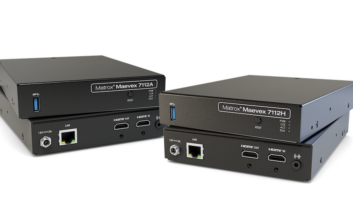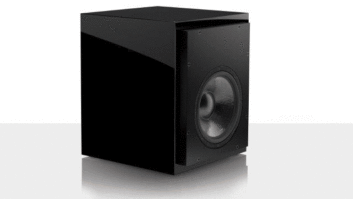Arlington, Va. — 2006 was the last year for double-digit percentage growth in the U.S. cellular subscriber base, but double-digit gains in handset dollar volume will continue through 2010 at the factory level, according to a Telecommunications Industry Association (TIA) forecast.
Although growth rates in unit handset sales will dip into single-digit territory between 2007 and 2010, a step-up trend driven by new data services and handset features will keep factory-level dollar volume growing at a compound annual rate of 11.4 percent during the period, TIA said in its annual Telecommunications Market Review and Forecast.
The number of U.S. cellular subscribers hit 216 million in 2006, up 11.1 percent from 2005, TIA said. In 2007, growth will dip to 8.8 percent and decline further every year after that through 2010, when the growth rate will slide to 2.7 percent. For the 2007-2010 period, the compound annual growth rate will be 5.7 percent.
In the years dating back to 2000, growth rates ranged from a high of 27.1 percent in 2000 to a low of 10 percent in 2003.
“With more than 70 percent of the U.S. population already subscribing, incremental growth in the wireless universe will be limited,” TIA said. In 2010, the cellular population will hit 270 million people representing 87 percent of the U.S. population.
Deep penetration: Cellular penetration is so deep that in 2005, the number of wireless subscriptions exceeded landline subscriptions for the first time, TIA noted. By 2010, TIA forecasts the number of wireless subscribers will exceed landline subscribers by 135 million. Between now and then, landline subscriptions will continue to fall, but “the rate of decline will moderate somewhat as services such as VoIP and broadband video help landline carriers retain subscribers,” TIA said.
Even with slowing subscriber-base growth, TIA expects continued double-digit growth in factory-level handset revenue through 2009, with an additional 7.7 percent increase in 2010 bringing factory-level dollar volume to $25.7 billion from 2006’s $16.7 billion. In 2006, factory-level dollar volume rose a whopping 22.9 percent while the subscriber base expanded 11.1 percent.
Prices Up: TIA also found that the average factory-level handset price rose in 2006 by 6.2 percent to $138, marking the largest increase in recent years. The association expects average handset prices to rise at a compound annual rate of 2.4 percent between 2007 and 2010, when the average price will hit $152. In contrast, average handset prices fell almost without interruption since 1988, rising only in 1997 and once more in 2005, when the average price rose 4 percent.
Replacement rate: Sales of step-up replacement phones with added features will continue to spur handset dollar volume, TIA said. Replacement phones will increase from 70 percent of handset sales in 2006 to almost 90 percent in 2010.
TIA attributed the 2005-2006 handset-price gains to “a more rapid turnover of the handset base, as subscribers wanting to take advantage of new wireless applications upgraded their handsets.” The functions generating the most demand are video clips and live television, music, 3D video games, Internet access, instant messaging and children’s phones, TIA said.
“As the growth of new subscribers eases,’ TIA continued, “manufacturers are introducing new handsets with additional features, such as more advanced cameras and MP3 players to spur the replacement market. New wireless handsets are being marketed as portable entertainment centers, with voice communications as a sideline.” The report found that about 10 percent of handsets sold in the second quarter of 2006 included MP3 players, double the percentage of the year-ago quarter.
Units Up: In units, handset sales will continue to growth through 2010, but not at the rate that dollar volume will grow, even though carriers are giving customers free phones as an incentive to renew their contracts, TIA said. Handset sales are projected to hit 169 million units by 2010, marking an 8.7 percent compound annual growth rate between 2007 and 2010. Sales grew at double-digit percentage-growth rates between 2003 and 2006, but the last double-digit growth year will be 2007, when unit sales are expected to rise 10.7 percent following 2006’s 15.8 percent gain. Unit growth will slow to 8.2 percent in 2008, 9 percent in 2009 and 7 percent in 2010.
As subscriber growth slows, carriers are turning to data services to bolster ARPU, TIA said. “While growth in voice traffic will continue to stimulate the wireless market, data and multimedia applications will be the principal drivers of transport, equipment spending and handset revenue to 2010,” the report contended. In 2006, data applications already accounted for 10 percent of total carrier revenues of $127.7 billion, and by 2010, data will generate about 24 percent of carriers’ $183 billion revenue, the TIA said. Wireless-data revenue will grow at a 36.2 percent compound annual rate between 2007 and 2010, compared with 4.9 percent for wireless voice revenue.
ARPU Up: Slower subscriber-base growth has generated intense carrier competition that has driven down the price of voice minutes, but TIA nonetheless expects “ARPU growth to accelerate during the next four years as data applications increase in share.” Eventually, however, “the drop to mid-to-low single-digit subscriber growth will eventually limit wireless revenue growth to high single-digit increases beginning in 2008,” TIA said. TIA forecasts carrier revenues to grow between 2007 and 2010 at a 9.4 percent compound annual growth rate to $183 billion in 2010.
To keep the subscriber base growing, carriers have turned to prepaid and children’s applications, TIA notes.













